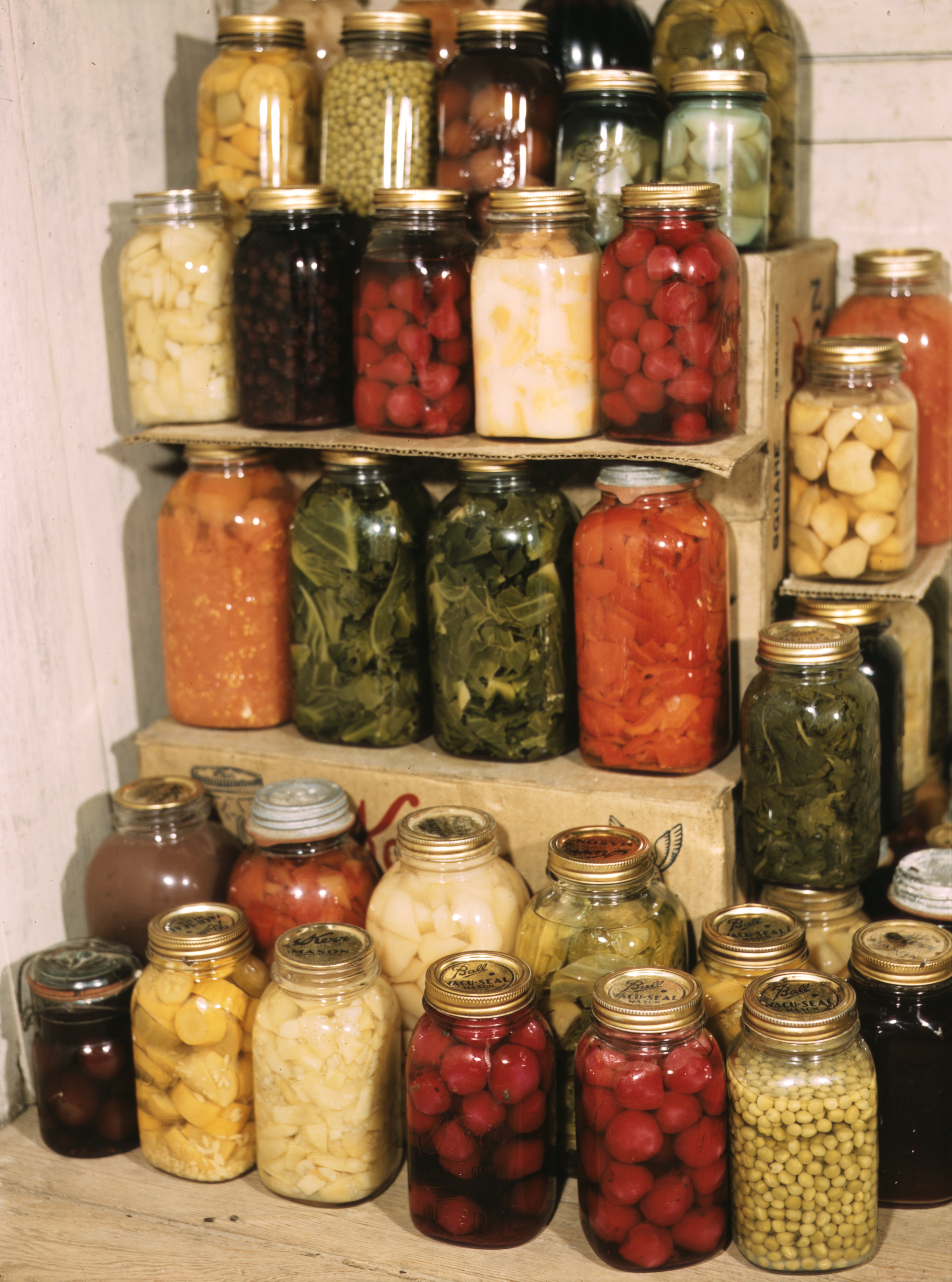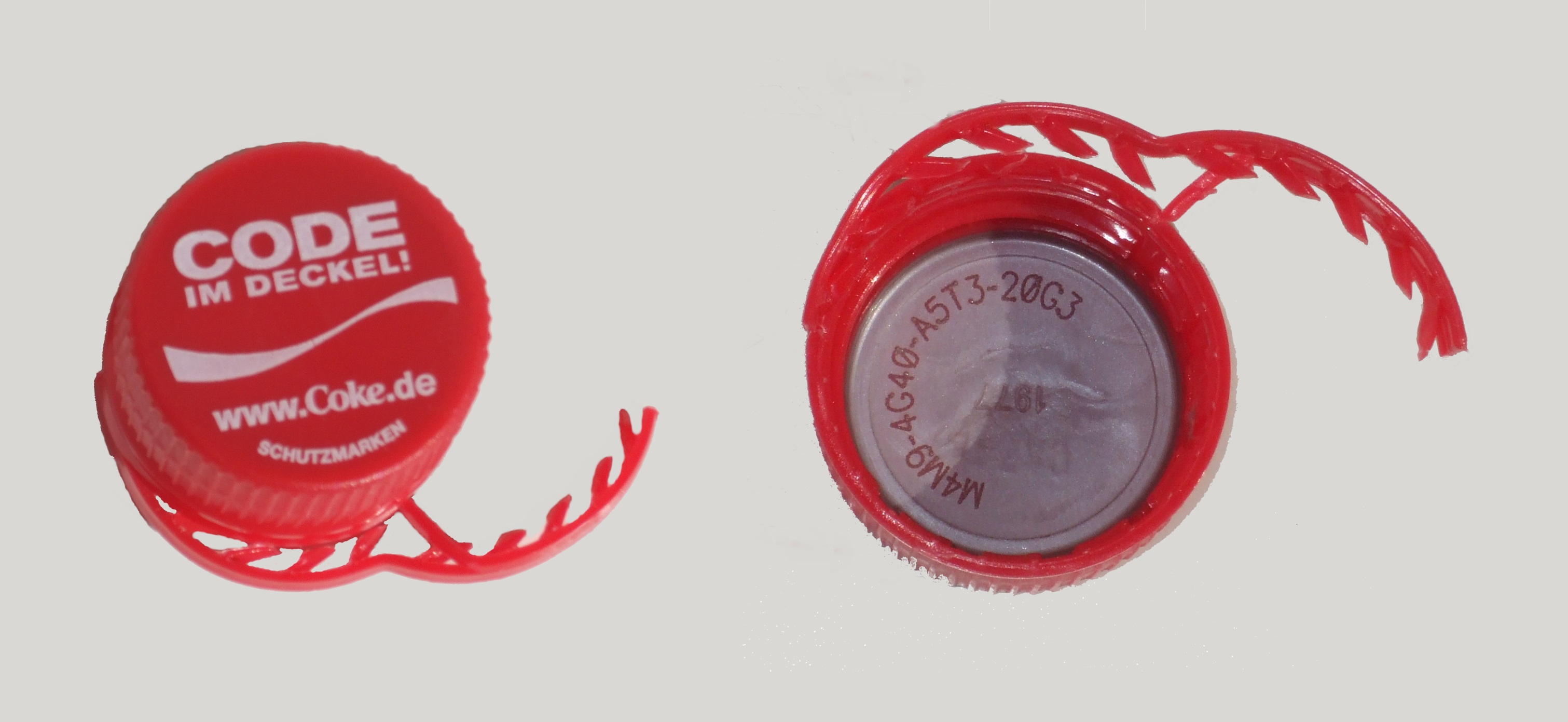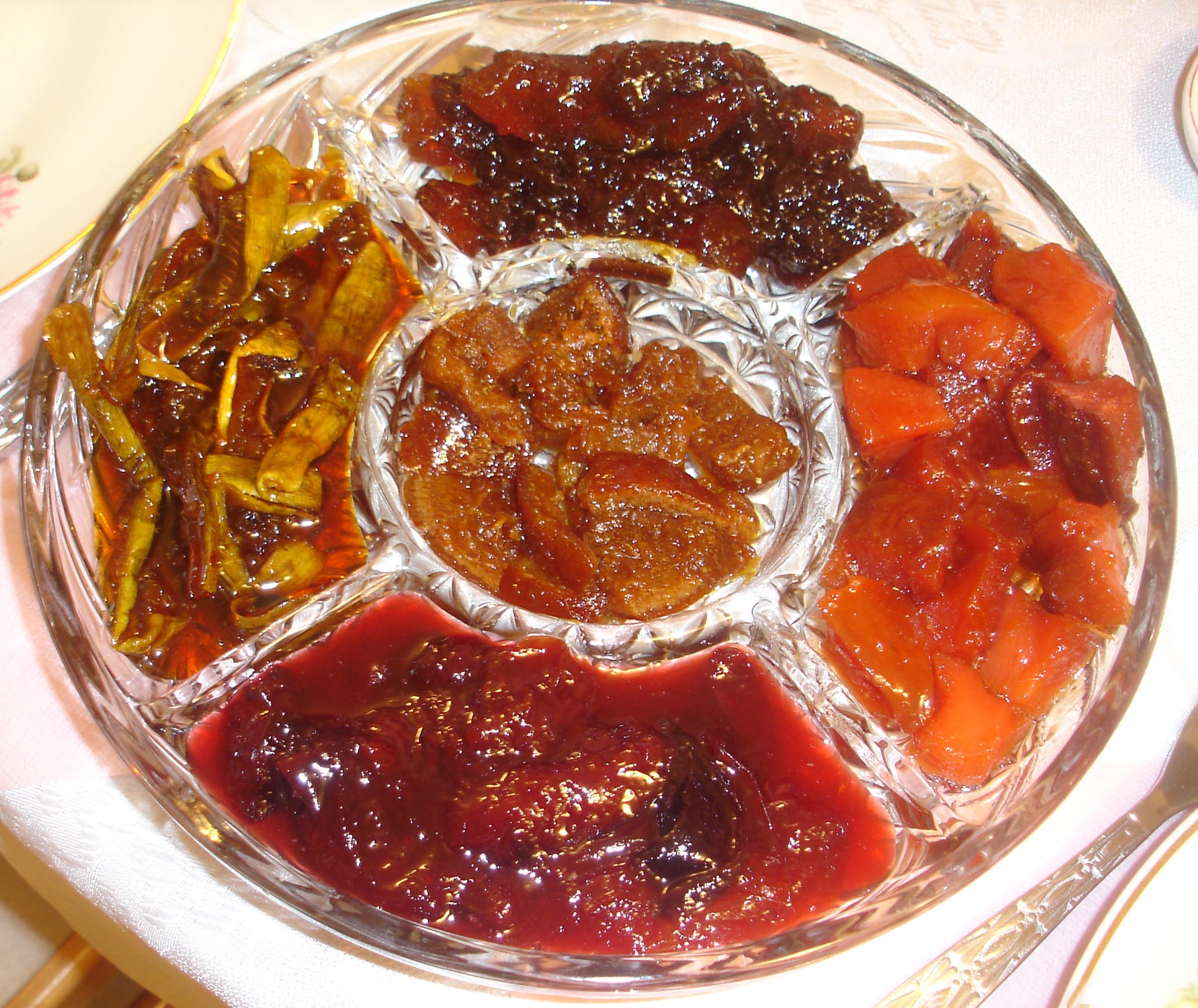|
Jar
A jar is a rigid, cylindrical or slightly conical container, typically made of glass, ceramic, or plastic, with a wide mouth or opening that can be closed with a lid, screw cap, lug cap, cork stopper, roll-on cap, crimp-on cap, press-on cap, plastic shrink, heat sealed lidding film, an inner seal, a tamper-evident band, or other suitable means. The English word "jar" originates from the Arabic word ''jarra'', which means an earthen pot or vessel. Background Jars can be used to hold solids too large to be removed from, or liquids too viscous to be poured through a bottle's neck; these may be foods, cosmetics, medications, or chemicals. Glass jars—among which the most popular is the mason jar—can be used for storing and preserving items as diverse as jam, pickled gherkin, other pickles, marmalade, sun-dried tomatoes, olives, jalapeño peppers, chutneys, pickled eggs, honey, and many others. Types * Bell jar – typically used in scientific laboratories to produce ... [...More Info...] [...Related Items...] OR: [Wikipedia] [Google] [Baidu] |
Mason Jar
A Mason jar, also known as a canning jar, preserves jar or fruit jar, is a glass jar used in home canning to food preservation, preserve food. It was named after American tinsmith John Landis Mason, who patented it in 1858. The jar's mouth has a screw thread on its outer perimeter to accept a metal ring or "band". The band, when screwed down, presses a separate Stamping (metalworking), stamped steel disc-shaped lid (container), lid against the jar's rim. After Mason's patent expired, numerous other companies began manufacturing similar jars. Over the years, the Brand, brand name ''Mason'' became the Generic trademark, genericized trademark for that style of glass home canning jar, and the word "Mason" can be seen on many Ball Corporation, Ball and Kerr brand jars. The style of jar is occasionally referred to by common brand names such as Ball jar (in the eastern US) or Kerr jar (in the western US) even if the individual jar is not that brand. In early 20th-century United States, ... [...More Info...] [...Related Items...] OR: [Wikipedia] [Google] [Baidu] |
Jar Of Yeast Extract
A jar is a rigid, cylindrical or slightly conical container, typically made of glass, ceramic, or plastic, with a wide mouth or opening that can be closed with a lid, screw cap, lug cap, Bung, cork stopper, roll-on cap, crimp-on cap, press-on cap, Shrink wrap, plastic shrink, heat sealed lidding film, an inner seal, a tamper-evident band, or other suitable means. The English word "jar" originates from the Arabic word ''jarra'', which means an earthen pot or vessel. Background Jars can be used to hold solids too large to be removed from, or liquids too Viscosity, viscous to be poured through a bottle's neck; these may be foods, cosmetics, medications, or Chemical substance, chemicals. Glass jars—among which the most popular is the mason jar—can be used for storing and preserving items as diverse as Fruit preserves, jam, Pickled cucumber, pickled gherkin, other pickles, marmalade, sun-dried tomatoes, olives, Jalapeño, jalapeño peppers, chutneys, pickled eggs, honey, and ma ... [...More Info...] [...Related Items...] OR: [Wikipedia] [Google] [Baidu] |
Bell Jar
A bell jar is a glass jar, similar in shape to a bell (instrument), bell (i.e. in its best-known form it is open at the bottom, while its top and sides together are a single piece), and can be manufactured from a variety of materials (ranging from glass to different types of metals). Bell jars are often used in laboratories to form and contain a vacuum. It is a common science apparatus used in experiments. Bell jars have a limited ability to create strong vacuums; vacuum chambers are available when higher performance is needed. They have been used to demonstrate the effect of vacuum on sound propagation. In addition to their scientific applications, bell jars may also serve as display cases or transparent dust covers. In these situations, the bell jar is not usually placed under vacuum. Vacuum A vacuum bell jar is placed on a base which is vented to a hose fitting, that can be connected via a hose to a vacuum pump. A vacuum is formed by pumping the air out of the bell jar. The ... [...More Info...] [...Related Items...] OR: [Wikipedia] [Google] [Baidu] |
Arabic
Arabic (, , or , ) is a Central Semitic languages, Central Semitic language of the Afroasiatic languages, Afroasiatic language family spoken primarily in the Arab world. The International Organization for Standardization (ISO) assigns language codes to 32 varieties of Arabic, including its standard form of Literary Arabic, known as Modern Standard Arabic, which is derived from Classical Arabic. This distinction exists primarily among Western linguists; Arabic speakers themselves generally do not distinguish between Modern Standard Arabic and Classical Arabic, but rather refer to both as ( "the eloquent Arabic") or simply ' (). Arabic is the List of languages by the number of countries in which they are recognized as an official language, third most widespread official language after English and French, one of six official languages of the United Nations, and the Sacred language, liturgical language of Islam. Arabic is widely taught in schools and universities around the wo ... [...More Info...] [...Related Items...] OR: [Wikipedia] [Google] [Baidu] |
Glass
Glass is an amorphous (non-crystalline solid, non-crystalline) solid. Because it is often transparency and translucency, transparent and chemically inert, glass has found widespread practical, technological, and decorative use in window panes, tableware, and optics. Some common objects made of glass are named after the material, e.g., a Tumbler (glass), "glass" for drinking, "glasses" for vision correction, and a "magnifying glass". Glass is most often formed by rapid cooling (quenching) of the Melting, molten form. Some glasses such as volcanic glass are naturally occurring, and obsidian has been used to make arrowheads and knives since the Stone Age. Archaeological evidence suggests glassmaking dates back to at least 3600 BC in Mesopotamia, Ancient Egypt, Egypt, or Syria. The earliest known glass objects were beads, perhaps created accidentally during metalworking or the production of faience, which is a form of pottery using lead glazes. Due to its ease of formability int ... [...More Info...] [...Related Items...] OR: [Wikipedia] [Google] [Baidu] |
Pickled Cucumber
A pickled cucumber – commonly known as a pickle in the United States, Canada and Australia and a gherkin ( ) in Britain, Ireland, South Africa, and New Zealand – is a usually small or miniature cucumber that has been Pickling, pickled in a Brine (food), brine, vinegar, or other solution and left to ferment. The fermentation process is executed either by immersing the cucumbers in an acidic solution or through souring by lacto-fermentation. Pickled cucumbers are often part of mixed pickles. Historical origins It is often claimed that pickled cucumbers were first developed for workers building the Great Wall of China, though another hypothesis is that they were first made as early as 2030 BC in the Tigris Valley of Mesopotamia, using cucumbers brought originally from India. According to the New York Food Museum, archaeologists believe ancient Mesopotamians pickled food as far back as 2400 B.C. while, centuries later, cucumbers native to India were being pickled in the Tig ... [...More Info...] [...Related Items...] OR: [Wikipedia] [Google] [Baidu] |
Screw Cap
A screw cap or closure is a common type of closure for bottles, jars, and tubes. History Screw caps had been used in Europe since the 1500s and a British patent was filed in 1810 by Peter Durand acting on behalf of Nicolas Appert. John Landis Mason patented in 1858 a screw-on lid for a jar that became known as the Mason jar. Usage A screw closure is a mechanical device which is screwed on and off of a "finish" on a container. Either continuous threads or lugs are used. It must be engineered to be cost-effective, to provide an effective seal (and barrier), to be compatible with the contents, to be easily opened by the consumer, often to be reclosable, and to comply with product, package, and environmental laws and regulations. Manufacturers may ensure the integrity of a screw cap using a cap torque tester. Some closures need to be tamper resistant and have child-resistant packaging features. A tamper-evident band is a common tamper warning for screw caps of bottles ... [...More Info...] [...Related Items...] OR: [Wikipedia] [Google] [Baidu] |
Fruit Preserves
Fruit preserves are preparations of fruits whose main preserving agent is sugar and sometimes acid, often stored in glass jars and used as a condiment or spread. There are many varieties of fruit preserves globally, distinguished by the method of preparation, type of fruit used, and its place in a meal. Sweet fruit preserves such as jams, jellies, and marmalades are often eaten at breakfast with bread or as an ingredient of a pastry or dessert, whereas more savory and acidic preserves made from " vegetable fruits" such as tomato, squash or zucchini, are eaten alongside savory foods such as cheese, cold meats, and curries. Techniques There are several techniques of making jam, with or without added water. One factor depends on the natural pectin content of the ingredients. When making jam with low-pectin fruits like strawberries, high-pectin fruit like orange can be added, or additional pectin in the form of pectin powder, citric acid or citrus peels. Often the fruit will b ... [...More Info...] [...Related Items...] OR: [Wikipedia] [Google] [Baidu] |
Honey
Honey is a sweet and viscous substance made by several species of bees, the best-known of which are honey bees. Honey is made and stored to nourish bee colonies. Bees produce honey by gathering and then refining the sugary secretions of plants (primarily floral nectar) or the secretions of other insects, like the honeydew of aphids. This refinement takes place both within individual bees, through regurgitation and enzymatic activity, and during storage in the hive, through water evaporation that concentrates the honey's sugars until it is thick and viscous. Honey bees stockpile honey in the hive. Within the hive is a structure made from wax called honeycomb. The honeycomb is made up of hundreds or thousands of hexagonal cells, into which the bees regurgitate honey for storage. Other honey-producing species of bee store the substance in different structures, such as the pots made of wax and resin used by the stingless bee. Honey for human consumption is collected ... [...More Info...] [...Related Items...] OR: [Wikipedia] [Google] [Baidu] |
Bottle
A bottle is a narrow-necked container made of an impermeable material (such as glass, plastic or aluminium) in various shapes and sizes that stores and transports liquids. Its mouth, at the bottling line, can be sealed with an internal stopper, an external bottle cap, a closure, or induction sealing. Etymology First attested in 14th century. From the English word ''bottle'' derives from an Old French word ''boteille'', from vulgar Latin">-4; we might wonder whether there's a point at which it's appropriate to talk of the beginnings of French, that is, when it wa ... word ''boteille'', from vulgar Latin ''butticula'', from late Latin ''buttis'' ("cask"), a Latinisation (literature), latinisation of the Greek language, Greek βοῦττις (''bouttis'') ("vessel"). Types Glass Wine The glass bottle represented an important development in the history of wine, because, when combined with a high-quality stopper such as a cork, it allowed long-term aging of wine. ... [...More Info...] [...Related Items...] OR: [Wikipedia] [Google] [Baidu] |
Tamper-evident Band
A tamper-evident band or security ring serves as a tamper resistant or tamper evident function to a screw cap, lid, or closure. The term ''tamper-proof'' is sometimes used but is considered a misnomer given that pilfering is still technically possible. A security band can be integrated with the cap or can be a separate package component. It is a plastic or metal structure around the circumference (usually) of the closure that is often found attached below a closure in bottles, jars, and tubs. Several variations have been developed for caps, lids, and closures. The use of custom printing and security printing is available. Perforations or other areas of weakness are often used to initiate and control a tear. Sometimes engineered frangibility is used for break-away functions. While tamper-evident bands are not considered a challenge for recycling, it is important that the band stays attached to the cap in case of refillable bottles, because it is hard to remove the r ... [...More Info...] [...Related Items...] OR: [Wikipedia] [Google] [Baidu] |
Jalapeño
The jalapeño ( , , ) is a medium-sized chili pepper Fruit, pod type cultivar of the species ''Capsicum annuum''. A mature jalapeño chili is long and wide, and hangs down from the plant. The pungency of jalapeño peppers varies, but is usually between 4,000 and 8,500 units on the Scoville scale. Commonly picked and consumed while still green, it is occasionally allowed to fully ripen and turn red, orange, or yellow. It is wider and generally milder than the similar Serrano pepper. History and etymology The jalapeño is variously named ''huachinango'', for the ripe red jalapeño, and ''chile gordo'' (meaning "fat chili pepper") also known as ''cuaresmeño''. The name ''jalapeño'' is Spanish language, Spanish for "from Xalapa", the capital city of Veracruz, Mexico. Contrary to popular belief, the jalapeño pepper is not grown in or around Xalapa, but Vicente Jiménez invented the process of pickling and canning the peppers in Xalapa. Genetic analysis of ''Capsicum annuum' ... [...More Info...] [...Related Items...] OR: [Wikipedia] [Google] [Baidu] |









